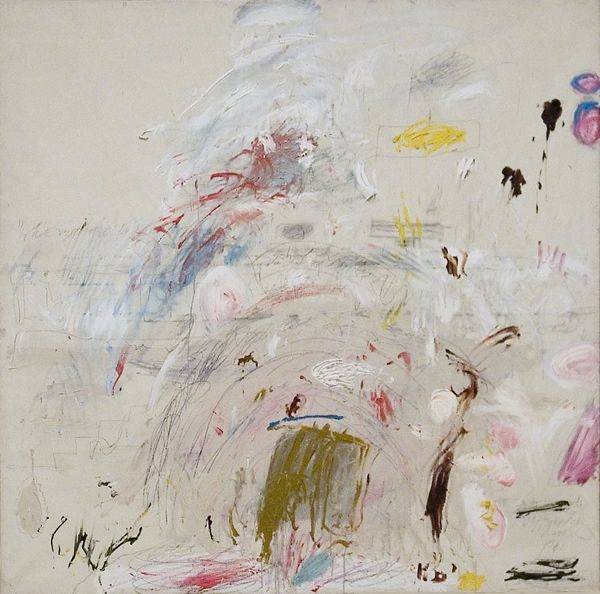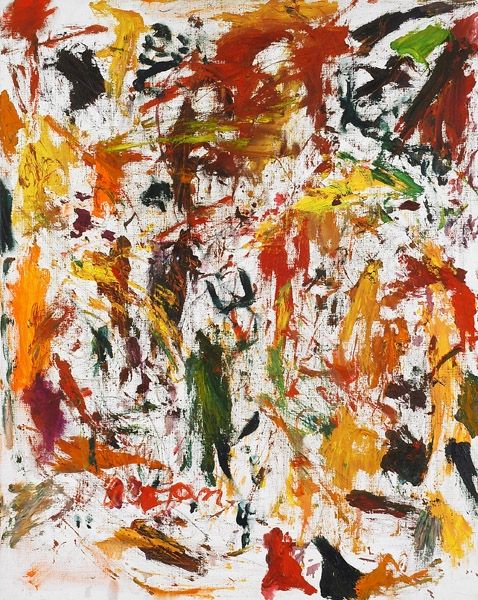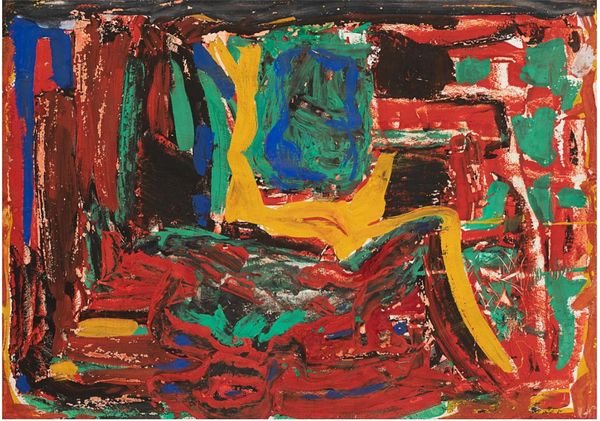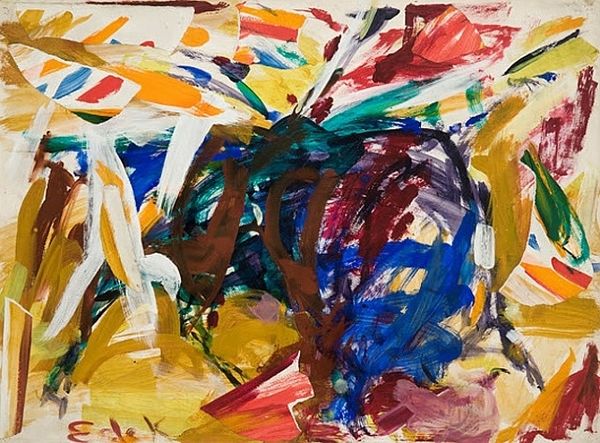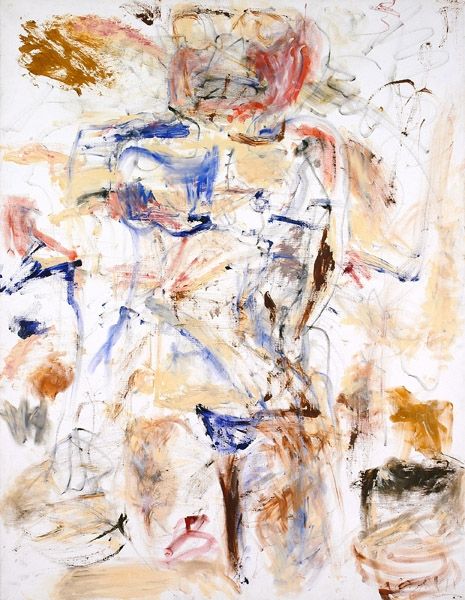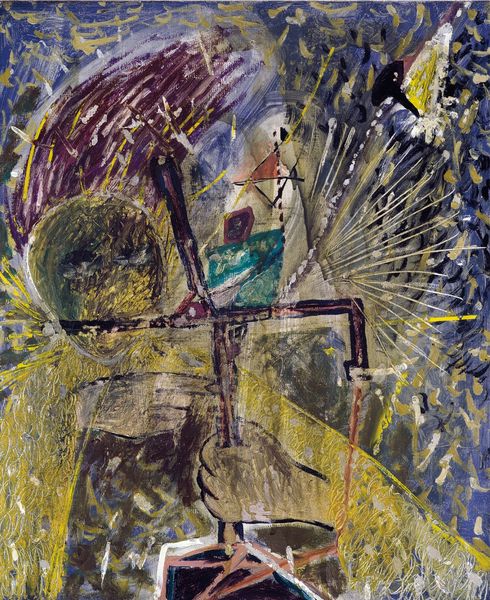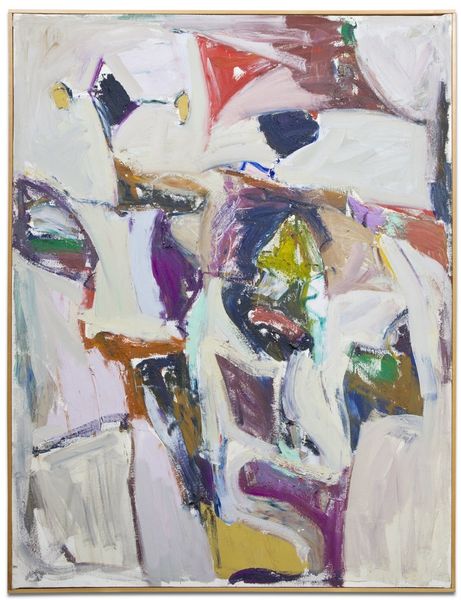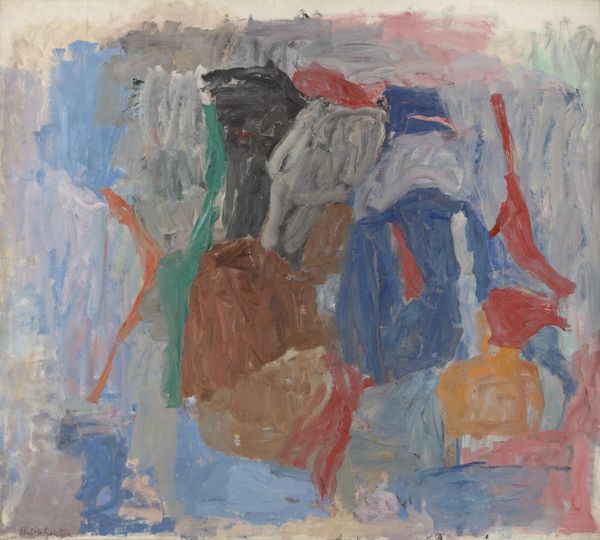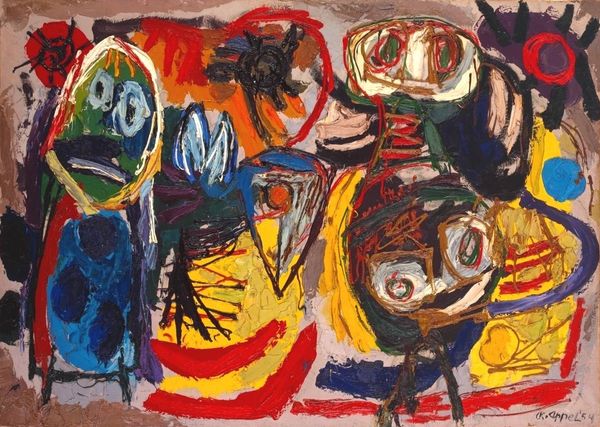
#
cobra
Copyright: Asger Jorn,Fair Use
Editor: This is Asger Jorn’s "Tu etais tel," created in 1956 using oil paint and collage. It feels really raw and immediate, almost like a group of faces emerging from chaos. What do you see in this piece from a historical point of view? Curator: Jorn's work is interesting because it operates in a fascinating space within post-war European art. We often frame Abstract Expressionism as a purely American phenomenon, but Jorn and the CoBrA group were crucial in developing a parallel, and arguably more politically charged, form of expression. Editor: Politically charged? How so? Curator: Well, consider the context. Europe was grappling with the aftermath of war, occupation, and immense social upheaval. Artists like Jorn questioned established power structures and sought to break away from academic traditions that they saw as complicit with oppressive regimes. Editor: So the chaotic forms and figures… Curator: …Become a visual language for expressing this rupture and the breakdown of societal norms. Think about the role museums play in shaping cultural narratives, how they legitimize certain artistic voices. Jorn challenged that directly. He understood art as a social act, something that should provoke and engage with the public sphere. Do you get a sense of that confrontational aspect? Editor: Definitely. It makes me think about the accessibility of art and how it functions in the public sphere even now. I hadn’t considered that connection before! Curator: Exactly! It forces us to question whose stories are being told and who gets to tell them. Editor: Thanks, that adds a whole other dimension to how I see it now. It's not just about abstract forms; it's a statement about art and its place in the world.
Comments
No comments
Be the first to comment and join the conversation on the ultimate creative platform.
